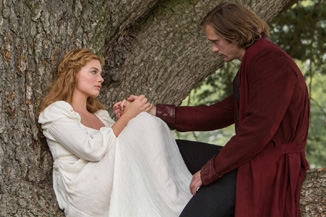|
|
Movie Review: The Legend of TarzanBy Ben GruchowJuly 7, 2016
All of this sounds complicated enough, until we realize that 90 percent of this storyline is contained within the first five minutes or so of the film—some through expository on-screen text, some through snatches of expository dialogue. What we really have here is the pitch: living legend reconnects with his roots in a way that follows the dual paths of a direct sequel and a reboot, theoretically offering the best of both worlds. To the movie’s credit, it does not take the path of forcing John/Tarzan to become reacquainted with his old home; he arrives in the Congo with full knowledge and capability. This introduces its own set of problems, though, chief among which is: since he has nothing left to develop and we have nothing new to learn about the environment, the entirety of the jungle is left as a tool with which to conceal and reveal mechanical story developments. This is a functional use of the cinematic environment, but it's possibly the least-interesting one you can come up with. The Legend of Tarzan has the miserable fortune to open less than three months after April’s terrific Jungle Book; imagine if Mowgli had spent most of that film in the human encampment, with only sporadic visits to the jungle beyond, and this is how we are limited here. Tarzan’s Congo is an indistinct and constantly blue-lit environment, partially CG and partially set-bound (and oh, how set-bound those parts are; it's been a long time since I've seen a big-budget action-adventure film look this conspicuously staged). We do not get an organic sense of place; we get the sense that director David Yates overdelegated, and the set designers and visual-effects technicians showed up, did their job, and went home, without being subjected to a comprehensive creative vision.
|

|
|
|

|
Thursday, October 31, 2024
© 2024 Box Office Prophets, a division of One Of Us, Inc.


